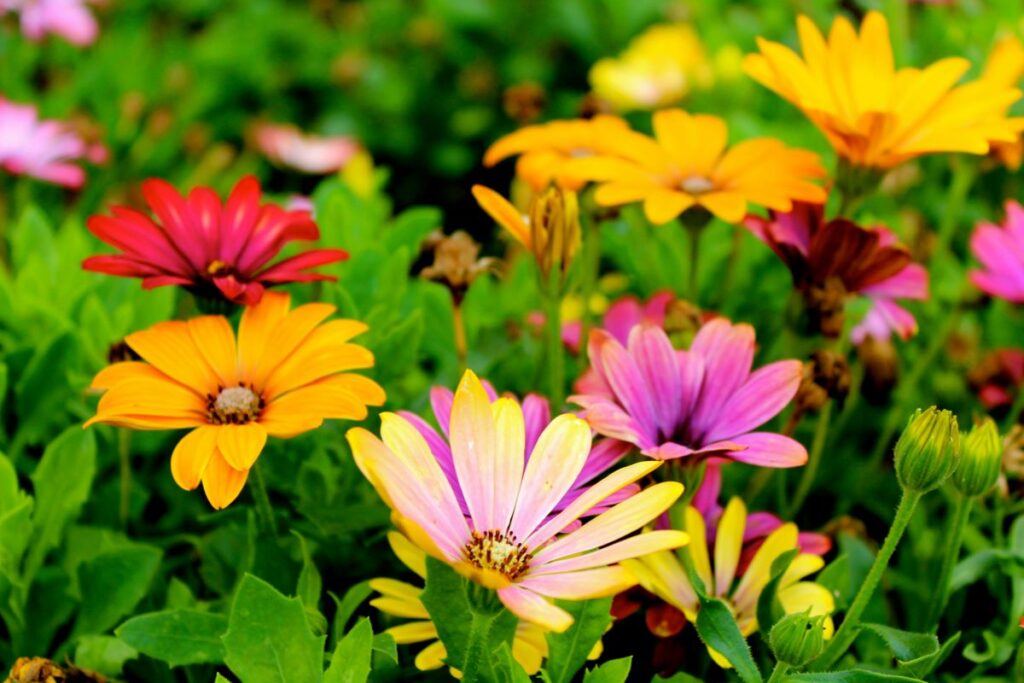
Subscribe to our newsletter
Enter your email address below and subscribe to our newsletter

Weather changes affect soil, moisture, and plant health. Without proper care, plants struggle to grow. Keep your garden thriving with simple adjustments throughout the year. Understanding each season’s demands helps prevent damage and promotes strong growth.
Plants need balanced nutrients, correct watering, and seasonal protection. Each season brings different challenges. Spring requires preparation, and summer demands heat management, autumn needs soil care, and winter demands frost protection. With the right methods, your plants will stay healthy regardless of season.
Spring marks the return of active plant growth. After winter, the soil may be compacted and low in nutrients. Loosen the soil to improve airflow and mix in organic compost. That enhances fertility and encourages root development.
Weeds grow rapidly in spring. Remove them early to prevent competition for nutrients. Mulch suppresses weeds and retains moisture. A layer of bark or straw keeps the soil cool and reduces evaporation. Also, many experienced gardeners use this method to great effect.
Early spring is ideal for planting vegetables, flowers, and shrubs. Choose varieties suited for fluctuating temperatures. Hardy plants like peas, spinach, and pansies tolerate cool nights. Ensure proper spacing to avoid overcrowding and disease.
Watering requires balance. Overwatering causes root rot while underwatering leads to stress. Water plants deeply but infrequently to encourage deep root growth. Morning watering prevents fungal diseases by allowing leaves to dry before nightfall.

Summer heat can significantly stress plants, leading to wilting or drying out. Applying mulch around plant roots effectively retains soil moisture and regulates temperature, preventing the soil from drying too quickly. A study published in Frontiers in Agronomy found that mulching in dryland agriculture offers advantages such as moisture retention, temperature regulation, weed suppression, soil health advancement, and erosion control, thereby boosting water resource efficiency and crop yields.
Consistent and efficient watering is also important. Watering in the early morning reduces evaporation, ensuring more water reaches the plant roots. Soaker hoses and drip irrigation systems deliver moisture directly to the roots, minimizing water waste. However, avoid watering plant leaves, which can lead to fungal infections.
Choose heat-tolerant plants. Lavender, succulents, and native grasses withstand high temperatures. Shade-sensitive plants need temporary covers, such as shade cloth or row covers, to prevent sunscald. Keeping your garden in good condition will be beneficial, so take extra steps to protect it.
Pests become active in warm weather. Monitor plants for aphids, spider mites, and caterpillars—natural solutions like neem oil, beneficial insects, and insecticidal soap control infestations. Remove dead leaves and debris to prevent pests from spreading.
Whether due to extreme weather or a change in residence, moving your garden requires careful planning to minimize plant stress, root damage, and transplant shock. The following practices can ensure a smooth transition and keep your outdoor greenery thriving in its new location.
Before relocation, assess each plant’s health and specific needs. Choose an optimal time—early spring or autumn—as moderate temperatures encourage root recovery. Keep the soil moist but not waterlogged, as hydration helps reduce transplant stress—water plants thoroughly a day before moving to maintain moisture levels.
Also, when digging up plants, use a sharp spade to carefully cut around the root ball, preserving as much soil as possible. For larger plants, dig a wider perimeter to protect deeper roots. Smaller plants should be transferred with their original soil to minimize disruption.
Plants should be placed in well-ventilated boxes or containers that prevent damage while allowing airflow for safe transport. To retain moisture, wrap root balls in moist burlap or plastic bags. Keep plants in a shaded, well-ventilated area during long-distance moves to prevent overheating or dehydration.
Upon arrival, replant immediately in a location with similar light, soil, and drainage conditions to reduce shock. Dig a hole twice the root ball’s width, gently set the plant inside, and surround it with nutrient-rich soil. Water deeply helps roots establish and supports healthy growth in their new environment.

Autumn is the time to prepare for cold temperatures. Prune trees and shrubs to remove weak branches, which prevents breakage from heavy rain or snow. Deadheading flowers encourage continued blooming and prevent the spread of disease.
Soil health is crucial before winter. Mix in compost or aged manure to replenish nutrients, improving soil structure and fertility for spring. Mulching helps insulate roots, preventing sudden temperature drops from harming plants.
Certain vegetables thrive in cool weather. Kale, carrots, and garlic can be planted in autumn for a winter harvest. Hardy perennials should be divided and replanted to prevent overcrowding and ensure strong growth.
Collect fallen leaves for mulch or compost. They break down into organic matter, enriching the soil. Avoid using diseased leaves, as they can spread infections.
Cold temperatures damage roots, stems and leaves. Therefore, use row covers, burlap wraps, or cloches to protect delicate plants from freezing winds and frost.
Watering is still necessary—water before a frost to insulate roots. However, avoid overwatering, as excess moisture can freeze and damage roots. Check soil moisture levels to ensure plants are not drying out. Remember that your garden is an important ingredient for the perfect home, so don’t neglect it during winter.
Perennials enter dormancy in winter. Trim dead growth to prevent rot and disease. Cover the soil with straw or leaves to maintain warmth. That protects root systems and prevents freezing damage.
Preparing the soil in winter helps with early spring planting. Turning the soil occasionally to aerate reduces compaction and evenly distributes nutrients. Cover crops like clover or winter rye prevent soil erosion and improve fertility.
Choosing the right plants ensures continuous color and growth. Some plants adapt to all seasons, providing visual interest and structure. Designing your garden is truly an art in itself.
Evergreens like boxwood, juniper, and spruce maintain greenery throughout the year. These add texture to gardens and act as wind barriers.
Seasonal flowers offer variety. Tulips and daffodils bloom in spring, marigolds and sunflowers thrive in summer, chrysanthemums flourish in autumn, and hellebores bloom in winter. That keeps the garden vibrant year-round.
Native plants require less maintenance and water. They adapt to local conditions and support pollinators—research plants suited to your region for the best results.
Mixing different plant types enhances resilience. Combining perennials, annuals, and shrubs creates a balanced ecosystem. That improves biodiversity and reduces pest problems.

Chemical fertilizers and pesticides harm soil life. Organic methods improve plant health without damaging the environment.
Composting adds nutrients, improves soil texture, and retains moisture. Kitchen scraps, grass clippings, and dry leaves make excellent compost. Regularly turning the compost pile speeds up decomposition.
Companion planting reduces pests. Basil repels mosquitoes, marigolds deter nematodes, and onions keep aphids away. Planting compatible crops improves growth and prevents disease.
Organic pest control uses natural predators and homemade sprays. Ladybugs eat aphids, and birds reduce insect populations. Garlic and neem oil sprays prevent infestations without harming beneficial insects.
Using cover crops, green manure, and crop rotation keeps soil healthy. These techniques replenish nutrients and prevent nutrient depletion. Healthy soil supports stronger, more productive plants.
A thriving garden requires seasonal care, smart plant choices, and organic solutions. Each season presents unique challenges, but preparation ensures continuous growth.
Adjusting soil, watering correctly, and protecting plants from temperature extremes promote resilience and productivity. Observing plant health and making timely changes also prevent common gardening problems.
Your plants will stay strong throughout the year with careful planning and the right methods. Adapt to seasonal changes and use effective gardening techniques to keep your garden thriving.
Meta: Keep your garden thriving through every season with expert tips on soil care, watering, plant selection, and organic solutions.
Kw: keep your garden thriving
Pictures:
https://www.pexels.com/photo/gazebo-against-trees-334978
https://www.pexels.com/photo/assorted-plants-with-trees-photography-7283
https://www.pexels.com/photo/assorted-color-flowers-298246
https://www.pexels.com/photo/pink-and-yellow-flowers-in-bloom-158636